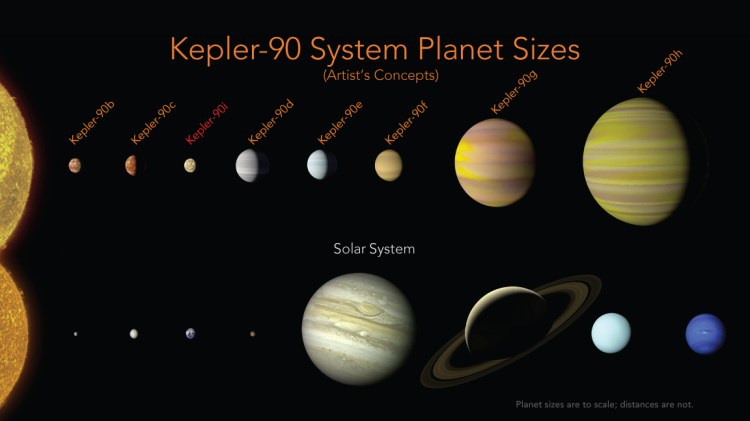testsetset
Google and NASA today announced the discovery of two new planets in old data from the Kepler space telescope, thanks to the application of machine learning.
A pair of researchers used a neural network to search the wealth of data from Kepler for changes in stars’ light output, which would indicate the presence of an orbiting planet. Google AI researcher Christopher Shallue said that he thinks this is the first time a neural net successfully discovered a new planet from the Kepler data.
One planet, Kepler-90i, is the 8th planet in the Kepler-90 system, which is part of the constellation Draco. That means Kepler-90 has as many planets as our solar system, a planet count that hadn’t previously been proven to exist outside of our planetary neighborhood. Andrew Vanderburg, a NASA Sagan Postdoctoral Fellow, said on a conference call with journalists that the planet is small, and likely rocky, with an orbit that’s very close to its star.
June 5th: The AI Audit in NYC
Join us next week in NYC to engage with top executive leaders, delving into strategies for auditing AI models to ensure fairness, optimal performance, and ethical compliance across diverse organizations. Secure your attendance for this exclusive invite-only event.
The discovery of Kepler-90i has significant implications for both the use of machine learning in astronomy and the field of astronomy itself. It shows that star systems with eight planets perhaps aren’t as uncommon as past evidence displayed. It’s also another sign that AI can be used to help astronomers get work done.
This isn’t the first time that neural nets have been used for planet discovery (one network helped identify when weather might have fouled up images of the sky taken from earth-bound telescopes), but it adds another point in favor of their utility.
Today’s news doesn’t mean that human astronomers will soon be replaced by machine learning-based robots. First off, humans did the work of verifying the presence of planets based on data that the algorithm surfaced. And the discovery wouldn’t have happened without a human-labeled data set that was used to train the system.
That data, by the way, is smaller than other sets typically used for deep learning applications, which means that there are potentially more improvements to be reaped by the introduction of additional labeled information.
People who want to try searching for planets themselves can download the full Kepler dataset from NASA’s website, and the source code for the planet-hunting algorithm that helped discover these two bodies will be made freely available.


